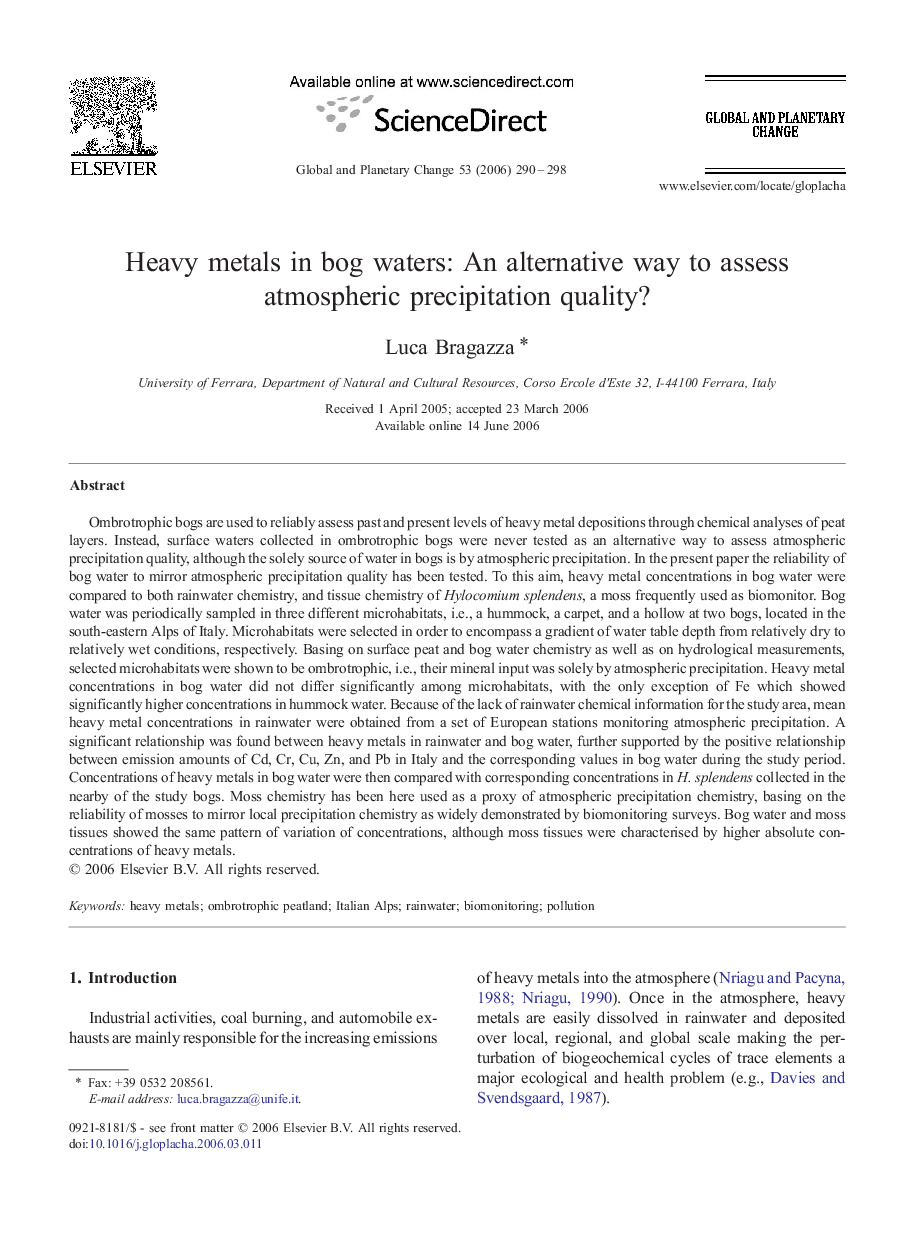| Article ID | Journal | Published Year | Pages | File Type |
|---|---|---|---|---|
| 4464527 | Global and Planetary Change | 2006 | 9 Pages |
Ombrotrophic bogs are used to reliably assess past and present levels of heavy metal depositions through chemical analyses of peat layers. Instead, surface waters collected in ombrotrophic bogs were never tested as an alternative way to assess atmospheric precipitation quality, although the solely source of water in bogs is by atmospheric precipitation. In the present paper the reliability of bog water to mirror atmospheric precipitation quality has been tested. To this aim, heavy metal concentrations in bog water were compared to both rainwater chemistry, and tissue chemistry of Hylocomium splendens, a moss frequently used as biomonitor. Bog water was periodically sampled in three different microhabitats, i.e., a hummock, a carpet, and a hollow at two bogs, located in the south-eastern Alps of Italy. Microhabitats were selected in order to encompass a gradient of water table depth from relatively dry to relatively wet conditions, respectively. Basing on surface peat and bog water chemistry as well as on hydrological measurements, selected microhabitats were shown to be ombrotrophic, i.e., their mineral input was solely by atmospheric precipitation. Heavy metal concentrations in bog water did not differ significantly among microhabitats, with the only exception of Fe which showed significantly higher concentrations in hummock water. Because of the lack of rainwater chemical information for the study area, mean heavy metal concentrations in rainwater were obtained from a set of European stations monitoring atmospheric precipitation. A significant relationship was found between heavy metals in rainwater and bog water, further supported by the positive relationship between emission amounts of Cd, Cr, Cu, Zn, and Pb in Italy and the corresponding values in bog water during the study period. Concentrations of heavy metals in bog water were then compared with corresponding concentrations in H. splendens collected in the nearby of the study bogs. Moss chemistry has been here used as a proxy of atmospheric precipitation chemistry, basing on the reliability of mosses to mirror local precipitation chemistry as widely demonstrated by biomonitoring surveys. Bog water and moss tissues showed the same pattern of variation of concentrations, although moss tissues were characterised by higher absolute concentrations of heavy metals.
